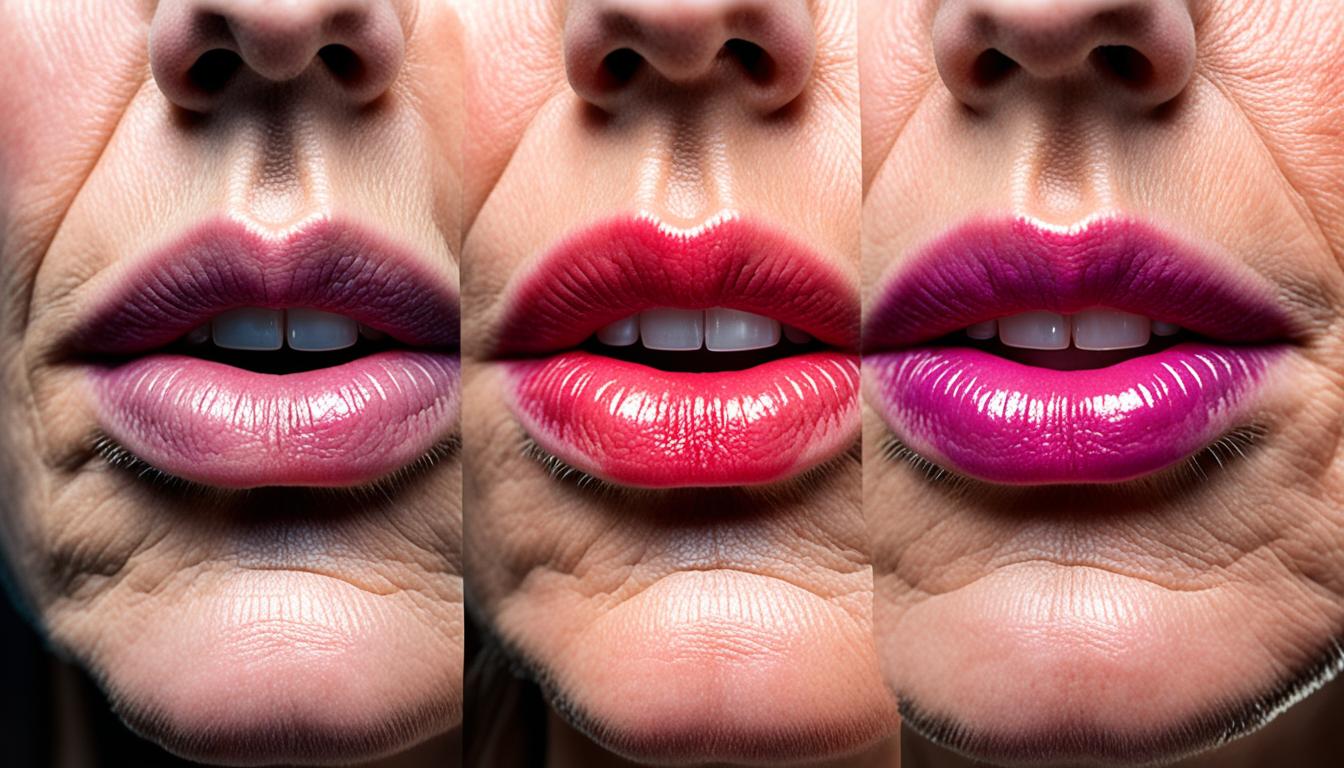Lip cancer starts in the lips and mouth. It’s a type of oral cancer that begins in the mucosa. This is the tissue inside the mouth. Over 90% of these cancers start in the squamous cells of the epidermis.
Early signs of lip cancer may include sores or lumps that don’t heal. You might also see bleeding, crusty spots, or swelling on the lips and inside the mouth. It’s more common in men and those aged 50 to 60.
Using tobacco and alcohol can raise your risk of lip cancer. If you notice any unusual changes in your mouth, see a doctor or dentist right away. Getting an early diagnosis and treatment is key.
Treating lip cancer depends on its stage and location. Options include surgery, radiation, and targeted therapy. Doctors are also looking into using stem cell therapy for this type of cancer.
The good news is lip cancer has a high survival rate. About 91% of people diagnosed with it survive for five years or more.
Key Takeaways:
- Lip cancer is a type of oral cancer that starts in the lips and mouth
- Early signs of lip cancer include sores or lumps on the lips or inside the mouth that do not heal
- Lip cancer is more common in males and people between the ages of 50 and 60
- Tobacco and alcohol use are lifestyle factors that can increase the risk of developing lip cancer
- Treatment options for lip cancer include surgery, radiation therapy, and targeted therapy
Symptoms of Lip Cancer
Lip cancer is a serious issue that needs quick diagnosis and treatment. Knowing its symptoms early is key to a better outcome. Here’s what to look for:
Sore That Does Not Heal
The main symptom of lip cancer is a sore that won’t go away. This could be a small bump or an ulcer. It might hurt or not, and it doesn’t get better for weeks or months.
Growth on the Lips
Sometimes, lip cancer looks like an odd growth or lump on your lips. This can be different in size, shape, and color. If your lips look strange, see a doctor.
Bleeding or Crusty Spots
If your lips have spots that are rough, scaly, or bleed, it might be lip cancer. If your lips bleed for no reason or have crusty patches, see a doctor.
Changes in Lip Shape or Size
If your lips change in shape or size, there could be a problem. This might mean your lips don’t look symmetrical, they get thicker, or they’re distorted. If you notice any of this, see a healthcare pro right away.
Unexplained Swelling
Sometimes, lip cancer makes your lips, tongue, or mouth swell for no known reason. It might also make you feel pain or find it hard to eat or speak. If swelling lasts, you should get it checked by a doctor.
Understand that signs of lip cancer might not be clear early on. Because of this, regular checkups can catch it before you see any signs.
Early detection of lip cancer is crucial for a good treatment outcome. If you’re worried about your lip health or see any of these symptoms, don’t wait to see a doctor.
| Symptoms of Lip Cancer | Frequency |
|---|---|
| Sore that does not heal | Common |
| Growth on the lips | Common |
| Bleeding or crusty spots | Common |
| Changes in lip shape or size | Less common |
| Unexplained swelling | Less common |
Diagnosis and Treatment of Lip Cancer
Lip cancer is typically diagnosed by a doctor. They look at your symptoms, medical history, and risks. They will check your mouth, including the lips, and the neck lymph nodes too. A biopsy is done to confirm lip cancer. Further tests are needed to see the cancer’s stage and if it has spread. Lip cancer is staged from 1 to 4, with 1 being the earliest and 4 being the most advanced.
The treatment for lip cancer depends on its stage, size, and where it’s located. The main treatment is surgery. The aim is to take out the tumor and any affected lymph nodes. Sometimes, radiation therapy is given before or after surgery. This is to kill remaining cancer cells and stop the cancer from coming back. For more severe cases, when surgery isn’t an option, chemotherapy may be used. There are also other treatments, like targeted therapy and immunotherapy, which are in trials.
Seeing a dentist regularly is key for spotting lip cancer early. Dentists can often find signs of it, like odd-looking patches or changes. Finding and treating lip cancer early boosts the chance of beating it.
Conclusion
Lip cancer starts in the lips and mouth. It’s key to know its signs, like sores or lumps that persist. They should be checked if they don’t heal. Quick treatment helps a lot.
Using tobacco and alcohol ups the risk. So, protect your lips from the sun and see your dentist often. This can lower your chances of getting lip cancer.
Lip cancer can mostly be beaten, with 91% of people living 5 years or more after diagnosis. Being aware of your oral health is a good start. With this and early medical care, you can fight off this cancer.
Be in charge of your mouth’s health, especially your lips. Keep an eye out for odd signs and act fast. This way, you can keep lip cancer at bay and improve your mouth’s health overall.

